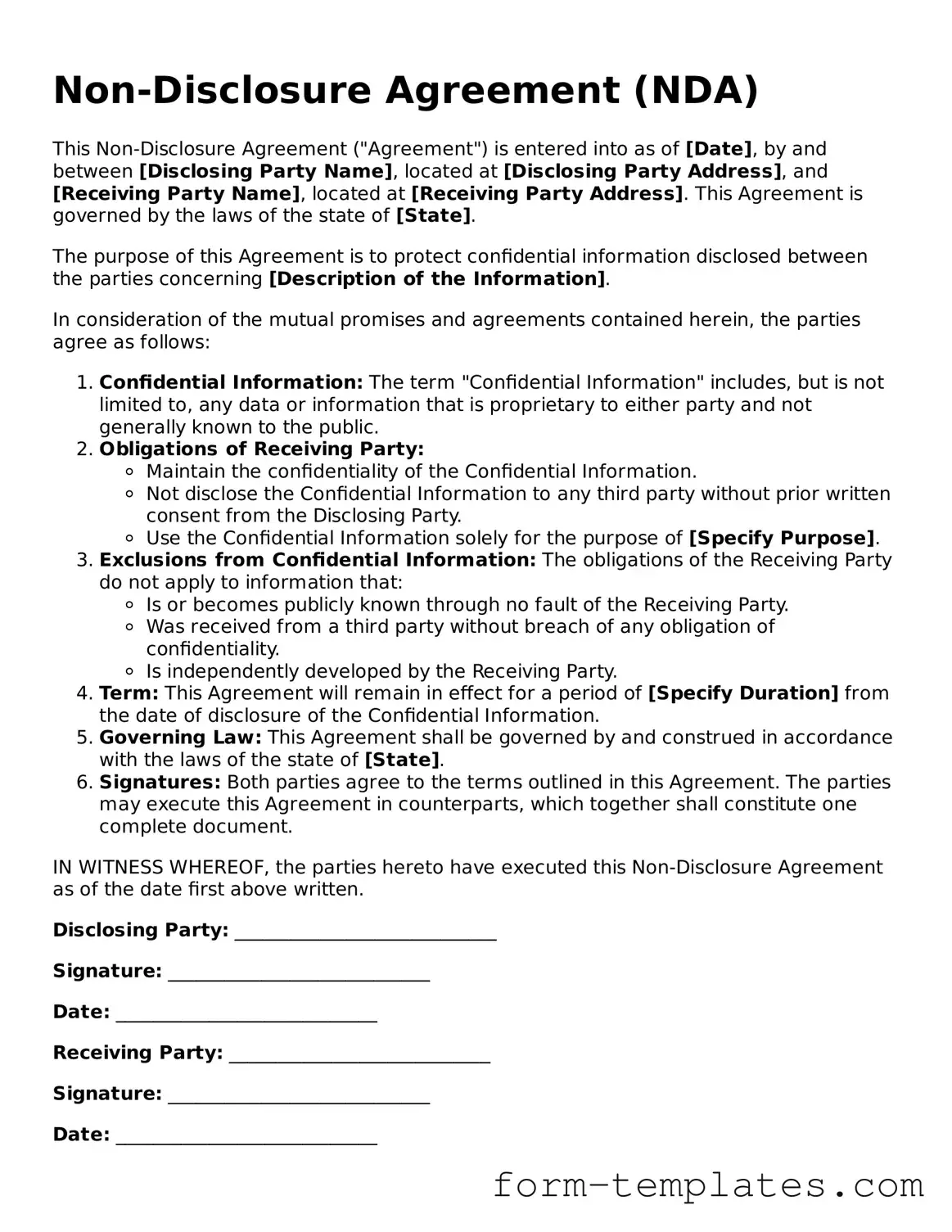Non-Disclosure Agreement (NDA)
This Non-Disclosure Agreement ("Agreement") is entered into as of [Date], by and between [Disclosing Party Name], located at [Disclosing Party Address], and [Receiving Party Name], located at [Receiving Party Address]. This Agreement is governed by the laws of the state of [State].
The purpose of this Agreement is to protect confidential information disclosed between the parties concerning [Description of the Information].
In consideration of the mutual promises and agreements contained herein, the parties agree as follows:
- Confidential Information: The term "Confidential Information" includes, but is not limited to, any data or information that is proprietary to either party and not generally known to the public.
- Obligations of Receiving Party:
- Maintain the confidentiality of the Confidential Information.
- Not disclose the Confidential Information to any third party without prior written consent from the Disclosing Party.
- Use the Confidential Information solely for the purpose of [Specify Purpose].
- Exclusions from Confidential Information: The obligations of the Receiving Party do not apply to information that:
- Is or becomes publicly known through no fault of the Receiving Party.
- Was received from a third party without breach of any obligation of confidentiality.
- Is independently developed by the Receiving Party.
- Term: This Agreement will remain in effect for a period of [Specify Duration] from the date of disclosure of the Confidential Information.
- Governing Law: This Agreement shall be governed by and construed in accordance with the laws of the state of [State].
- Signatures: Both parties agree to the terms outlined in this Agreement. The parties may execute this Agreement in counterparts, which together shall constitute one complete document.
IN WITNESS WHEREOF, the parties hereto have executed this Non-Disclosure Agreement as of the date first above written.
Disclosing Party: ____________________________
Signature: ____________________________
Date: ____________________________
Receiving Party: ____________________________
Signature: ____________________________
Date: ____________________________
